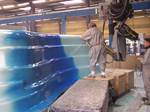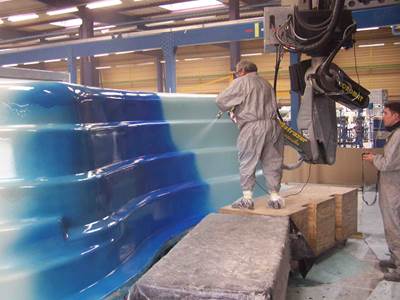The styrene puzzle
CT editor-in-chief outlines two major challenges posed by the recent listing of styrene in the U.S. National Toxicology Program's 12th Report on Carcinogens.
Last summer, as the CT editorial staff discussed what stories to schedule in 2012, we agreed that styrene merited careful scrutiny. The National Toxicology Program (NTP), under the U.S. Department of Health and Human Services (HHS), had just decided in June to list this important crosslinking agent in its 12th Report on Carcinogens (RoC), labeling it as “reasonably anticipated to be a human carcinogen.” The response from the composites industry — before and after the listing — has been loud and angry. The American Composites Manufacturing Assn. (ACMA), in particular, has been active, petitioning the Obama Administration, HHS and Congress with claims that the NTP employed “bad science” in its decision-making.
One of the challenges of covering a story like this (see our result under Editor's Picks," above right) is collecting and making sense of large volumes of data and information. The NTP chemical assessment process is long and complex, and leaves in its wake a trail of reports that is difficult to sort through. Still, one would assume that it wouldn’t be too hard to look at the epidemiological data surrounding styrene and determine, with some conviction, whether or not the NTP was flawed in its decision to list styrene in the RoC. Would that it were that easy.
There are, as I see it, two major challenges surrounding the NTP’s decision to list styrene. The first is specific to the styrene data itself; the second is endemic to the NTP chemical-review process.
Styrene data: Cancer studies of composites industry workers exposed to styrene have tracked almost 100,000 people over decades spanning back to the 1940s. This is great, but the earlier the study was done, the harder it is to determine the amount and duration of styrene exposure by a given worker in a given facility. Further, composites industry workers tend to be transient, thus it’s difficult to determine definitively that one person’s exposure to styrene in one facility for a short period of time caused development of a certain cancer later in life. You’ll find, in the report in this issue, that there is no clear data stream in the cancer studies that shows that styrene is consistently associated with a certain cancer type. That is, one study shows a correlation with one cancer type, while another shows a different carcinogenic correlation.
NTP process: Despite the fact that the NTP is a program based on ostensibly objective scientific exploration, the criteria on which it relies to determine a chemical’s carcinogenic threat is highly subjective. The criteria use phrases like “limited evidence of carcinogenicity,” “causal interpretation is credible,” and “convincing relevant information.” But what one considers limited, credible or convincing can be quite different from what another considers limited, credible or convincing. And like it or not, the ones who matter are those at the NTP, and that organization found a “limited carcinogenic correlation” for styrene.
Getting styrene off the RoC list appears difficult and unlikely — unless new data is developed that clears styrene of its potential carcinogenicity. That won’t stop ACMA and others from trying. We’ll keep you posted.
Related Content
Optimizing a thermoplastic composite helicopter door hinge
9T Labs used Additive Fusion Technology to iterate CFRTP designs, fully exploit continuous fiber printing and outperform stainless steel and black metal designs in failure load and weight.
Read MoreTU Munich develops cuboidal conformable tanks using carbon fiber composites for increased hydrogen storage
Flat tank enabling standard platform for BEV and FCEV uses thermoplastic and thermoset composites, overwrapped skeleton design in pursuit of 25% more H2 storage.
Read MoreMFFD thermoplastic floor beams — OOA consolidation for next-gen TPC aerostructures
GKN Fokker and Mikrosam develop AFP for the Multifunctional Fuselage Demonstrator’s floor beams and OOA consolidation of 6-meter spars for TPC rudders, elevators and tails.
Read MoreCombining multifunctional thermoplastic composites, additive manufacturing for next-gen airframe structures
The DOMMINIO project combines AFP with 3D printed gyroid cores, embedded SHM sensors and smart materials for induction-driven disassembly of parts at end of life.
Read MoreRead Next
Styrene: Issues and implications
The facts (such as they are) behind the furor surrounding this vital crosslinking chemical’s listing in the 12th RoC.
Read More“Structured air” TPS safeguards composite structures
Powered by an 85% air/15% pure polyimide aerogel, Blueshift’s novel material system protects structures during transient thermal events from -200°C to beyond 2400°C for rockets, battery boxes and more.
Read MorePlant tour: Daher Shap’in TechCenter and composites production plant, Saint-Aignan-de-Grandlieu, France
Co-located R&D and production advance OOA thermosets, thermoplastics, welding, recycling and digital technologies for faster processing and certification of lighter, more sustainable composites.
Read More





















